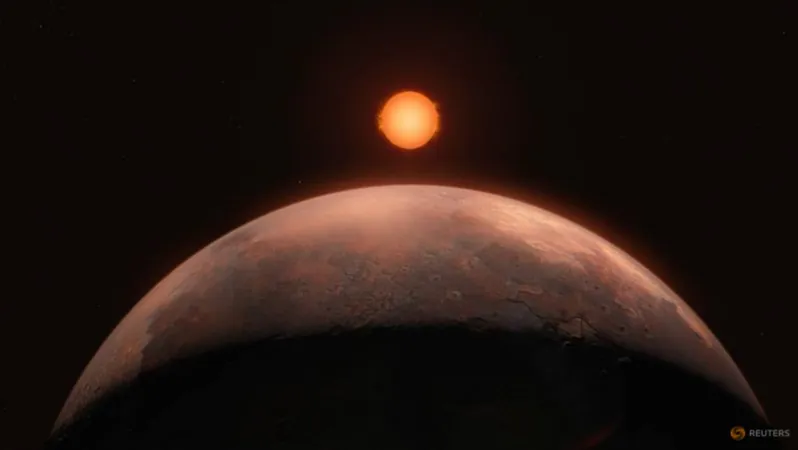
Groundbreaking Discovery: New Rocky Exoplanet Found Orbiting Barnard's Star - But Is It Habitable?
2024-10-02
Author: Li
Groundbreaking Discovery: New Rocky Exoplanet Found Orbiting Barnard's Star - But Is It Habitable?
In a stunning revelation for astronomers, the closest single star to our solar system, Barnard's star, has become the center of attention following the discovery of the first confirmed exoplanet orbiting it. This red dwarf, which is about 6 light years away and significantly smaller and less luminous than our sun, now hosts a rocky planet named Barnard b, which has a mass approximately 40% that of Earth.
While Barnard b orbits perilously close to its star—completing a full rotation every three Earth days at a scorching surface temperature of around 275 degrees Fahrenheit (125 degrees Celsius)—it’s not considered suitable for life as we know it. Nevertheless, scientists are buzzing with excitement due to "strong hints" of three additional rocky planets nearby. Spanning 20-30% of Earth's mass, these potential planets could very well lie within the star's habitable zone, a region where temperatures permit the existence of liquid water—a key ingredient for life.
Lead author of the revealing study, Jonay González Hernández from the Instituto de Astrofísica de Canarias, described Barnard b as one of the least massive planets ever discovered beyond our solar system. To put it into perspective, among our solar system's planets, only Mars and Mercury are smaller. Given its close proximity to its star—20 times closer than Mercury is to the sun—researchers are keen to find out if any of the suggestive planets could foster conditions for life.
Using the cutting-edge ESPRESSO instrument at the European Southern Observatory's Very Large Telescope in Chile, researchers made this pivotal discovery. Alejandro Suárez Mascareño, a co-author of the study, noted that Barnard's star is relatively quiet, unlike other red dwarfs that tend to be more active, which bodes well for the stability of any potential planetary atmospheres.
This finding is monumental not just for the study of exoplanets but for understanding the nature of stars and their planetary systems in general. Should the additional planets be confirmed, Barnard's star would be unique as the only known star with a multi-planet system comprised entirely of planets smaller than Earth.
As the closest star beyond the sun, Barnard's star is only preceded in proximity by the Alpha Centauri system, which is around 4 light-years away. In this system, two exoplanets have been identified, further fueling the intrigue surrounding neighboring systems and their potential for hosting life.
In a time when interstellar travel remains a dream, discoveries like these illuminate the possibilities and ignites the imagination. With institutions such as Breakthrough Starshot exploring the feasibility of light-speed travel, the prospects of visiting Barnard's star or Alpha Centauri may not be as far-fetched as they seem.
As the quest for habitable worlds continues, one thing is certain: Barnard's star and its intriguing planets are set to captivate astronomers and science enthusiasts for years to come. Keep your eyes on the skies!




 Brasil (PT)
Brasil (PT)
 Canada (EN)
Canada (EN)
 Chile (ES)
Chile (ES)
 España (ES)
España (ES)
 France (FR)
France (FR)
 Hong Kong (EN)
Hong Kong (EN)
 Italia (IT)
Italia (IT)
 日本 (JA)
日本 (JA)
 Magyarország (HU)
Magyarország (HU)
 Norge (NO)
Norge (NO)
 Polska (PL)
Polska (PL)
 Schweiz (DE)
Schweiz (DE)
 Singapore (EN)
Singapore (EN)
 Sverige (SV)
Sverige (SV)
 Suomi (FI)
Suomi (FI)
 Türkiye (TR)
Türkiye (TR)